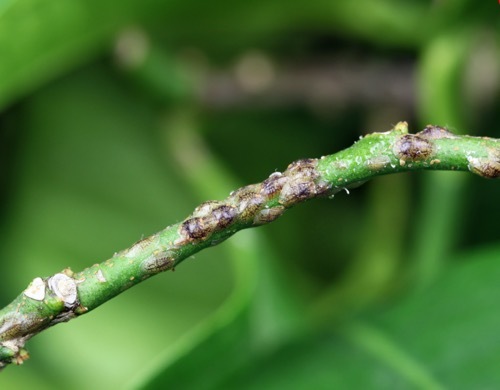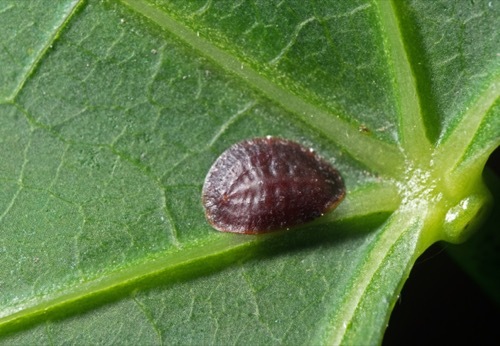
Where to Look for Scale Pests
Soft Scale Insects
Signs of Soft Scale Insects

Common Soft Scale Feeding Spots
- Cottony Maple Leaf Scale - on leaves or branches of maple or dogwood trees
- Wax Scale - on stems of holly, cherry laurel, boxwood, and other plants
- Tulip Tree Scale - on branches of tulip trees and magnolias
- Lecanium Scale - on branches and leaves of several types of oak tree, elms, maples, and others
- Crepe Myrtle Bark Scale - on branches and twigs of crepe myrtle plants -- these unusual scale insects have a bark- or felt-like scale covering, but behave like other soft scale in most ways
Armored Scale Insects
Signs of Armored Scale Insects

Common Armored Scale Feeding Spots
- Tea Scale - underneath the leaves of camellia and holly plants
- Gloomy Scale - on the trunk or branches of red maple trees
- Euonymus Scale - on leaves and stems of Euonymus, holly, and camellia plants
- Obscure Scale - on the trunk and branches of hickory and oak trees
- Juniper Scale - on leaves and stems of juniper and cypress plants
Do you have scale pests around your home or garden? Learn the treatment options available to you in our how to get rid of scale insects guide. Click the right arrow below to learn more!



